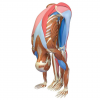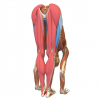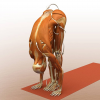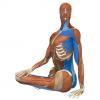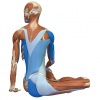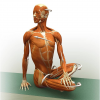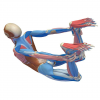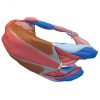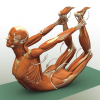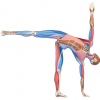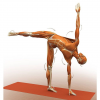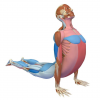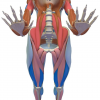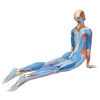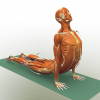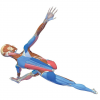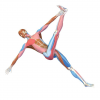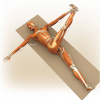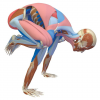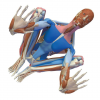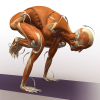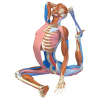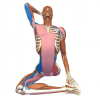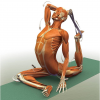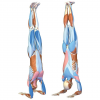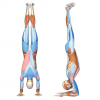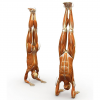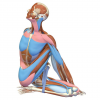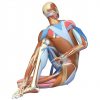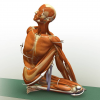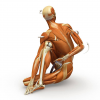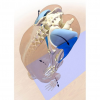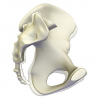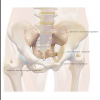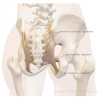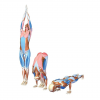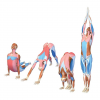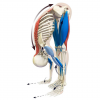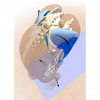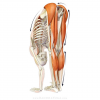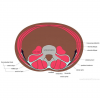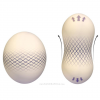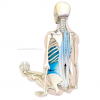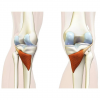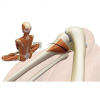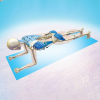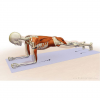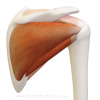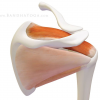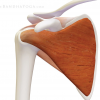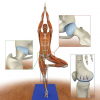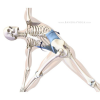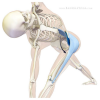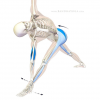spliffendz
Well-Known Member
Utthita Trikonasana - Extended Triangle Pose
.
Trikonasana creates a series of triangles with the body. These actions result in a powerful stretch of the front leg hamstrings, with a secondary stretch of the back leg hamstrings and gastroc-soleus muscles. It also stretches the upper-side abdominal and back muscles.
From “The Key Poses of Yoga”
by Ray Long MD
.
Pink muscles are stretching and blue muscles are contracting. The shade of the color represents the force of the stretch and the force of contraction. Darker = stronger.
.
.
Basic Joint Positions
.
• The front knee extends.
• The back knee extends.
• The back foot rotates inward 30 degrees and supinates.
• The front foot rotates out 90 degrees.
• The trunk laterally flexes.
• The front hip flexes.
• The back hip extends and externally rotates.
• Both shoulders abduct.
• Both elbows extend fully.
• The cervical spine rotates the head to face upward.
.
From “Anatomy for Vinyasa Flow and Standing Poses”
by Ray Long MD
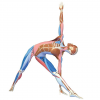
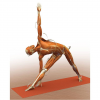
.
Trikonasana creates a series of triangles with the body. These actions result in a powerful stretch of the front leg hamstrings, with a secondary stretch of the back leg hamstrings and gastroc-soleus muscles. It also stretches the upper-side abdominal and back muscles.
From “The Key Poses of Yoga”
by Ray Long MD
.
Pink muscles are stretching and blue muscles are contracting. The shade of the color represents the force of the stretch and the force of contraction. Darker = stronger.
.
.
Basic Joint Positions
.
• The front knee extends.
• The back knee extends.
• The back foot rotates inward 30 degrees and supinates.
• The front foot rotates out 90 degrees.
• The trunk laterally flexes.
• The front hip flexes.
• The back hip extends and externally rotates.
• Both shoulders abduct.
• Both elbows extend fully.
• The cervical spine rotates the head to face upward.
.
From “Anatomy for Vinyasa Flow and Standing Poses”
by Ray Long MD



